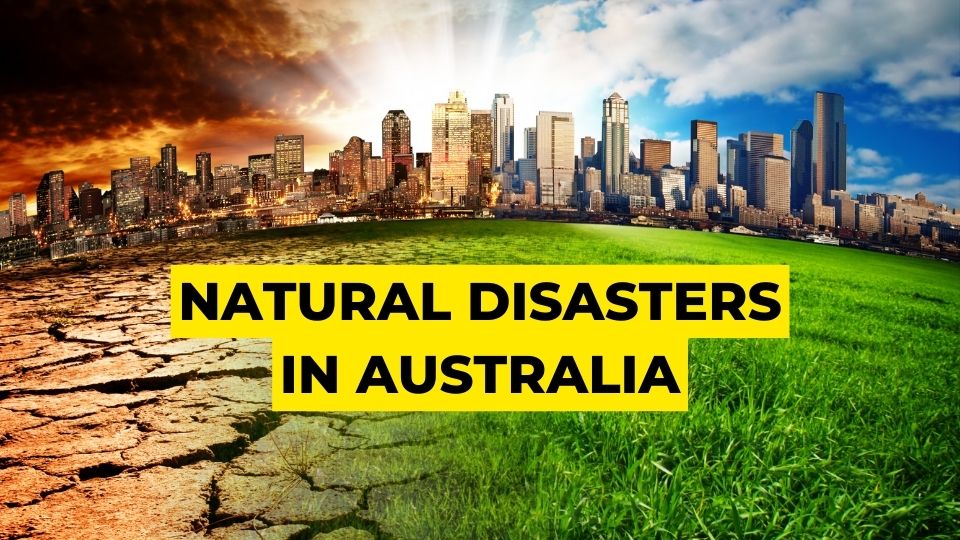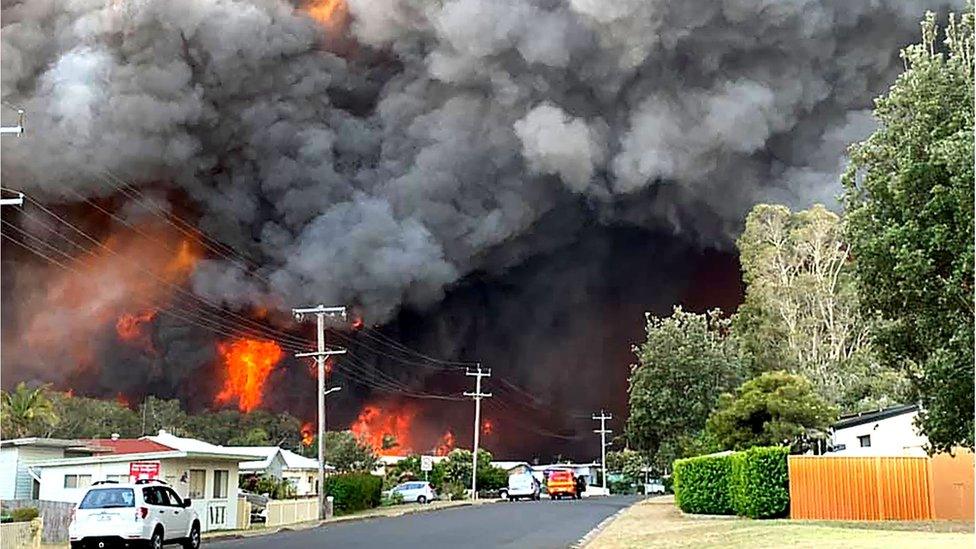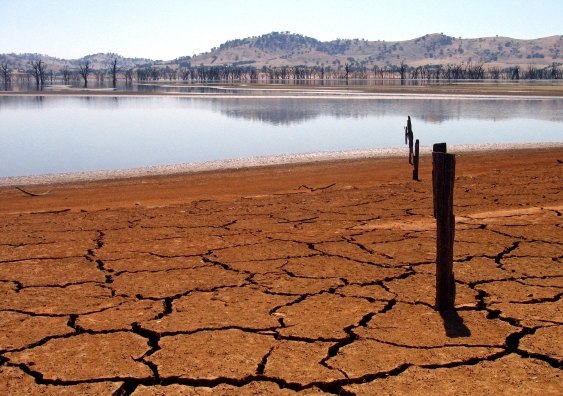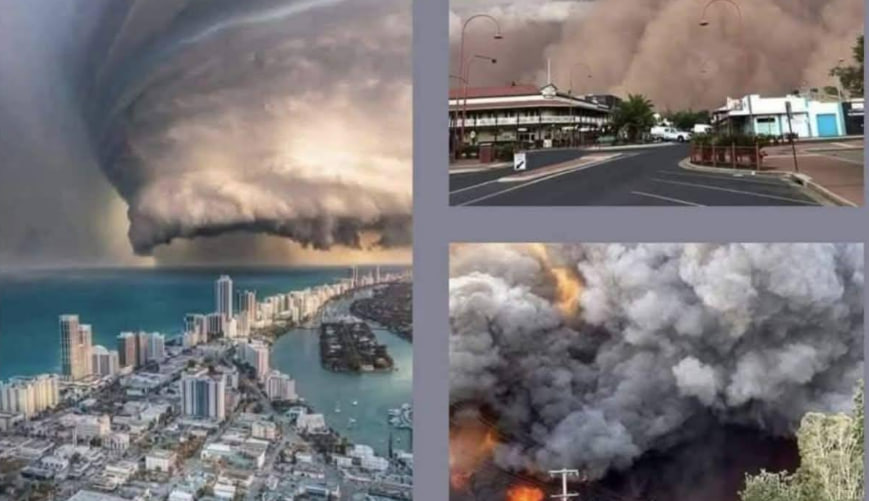Australia is famous for its wild, stunning landscapes but is equally known for its harsh and often extreme natural hazards. The country’s varied climate—from tropical north to temperate south—means it faces a wide range of serious natural disasters. In recent years, global climate change has further increased the frequency and intensity of events like bushfires, floods, dust storms, tropical cyclones, and heatwaves. Protecting lives and property requires learning hard lessons about planning and response.

Bushfires: An Ever-Present Threat
Bushfires are among the most dangerous and frequent natural disasters in Australia. Hot, dry, and windy summers create the perfect conditions for fires to ignite and spread rapidly. The 2019–2020 bushfire season, known as the “Black Summer,” was one of the worst in history, burning over 24 million hectares, destroying thousands of homes, and killing at least 33 people. An estimated 3 billion animals were killed or displaced as vast areas of habitat were destroyed.
Beyond the direct damage to life and property, bushfires severely impact air quality. Smoke and fine particulate matter can travel hundreds of kilometres, causing respiratory illnesses, especially in vulnerable groups like the elderly and children. To reduce these risks, Australia uses a combination of controlled burning, public education, and advanced early warning systems. These measures aim to manage fuel loads in forests, raise community awareness, and help people prepare for evacuation when fire danger is extreme.

Dust Storms: Challenges of the Dry Interior
Dust storms are another distinctive natural hazard in Australia, especially in its arid and semi-arid regions. Extended droughts dry out soils, making them easy for strong winds to lift into massive walls of dust that can travel at high speed. These storms can drastically reduce visibility, posing a serious risk to road and air transport, and also pose health hazards by aggravating respiratory conditions like asthma.
In January 2020, for example, a severe dust storm swept across parts of New South Wales, turning the sky red and blocking out the sun. Experiences like these have prompted local governments and communities to improve land management practices and raise public awareness about safety measures such as staying indoors and sealing buildings during dust events.
Floods: Water’s Destructive Power
Flooding is a familiar hazard in many parts of Australia, often following heavy rainfall or tropical cyclones. Major river systems like the Murray–Darling Basin can overflow, inundating vast areas. The historic floods of 2022 devastated communities in Queensland and New South Wales, with tens of thousands of homes inundated and billions of dollars in damages.
Floods do not just destroy homes and businesses; they also wash away roads and bridges, disrupt transportation, and contaminate water supplies. State governments have responded with investments in early warning systems, levees, and improved urban planning to keep new developments out of high-risk zones. Public education campaigns emphasize the importance of evacuating early and the dangers of driving through floodwaters.

Tropical Cyclones: Northern Australia’s Violent Storms
Northern Australia, including Queensland, the Northern Territory, and Western Australia, is regularly hit by tropical cyclones during the season from November to April. These storms bring destructive winds, torrential rain, and storm surges that can devastate coastal communities.
Cyclone Yasi in 2011 is a powerful example. It made landfall in Queensland with winds exceeding 200 km/h, causing more than AUD 3.5 billion in damages. Such cyclones not only destroy homes and infrastructure but also trigger severe flooding and landslides inland. Learning from past events, local governments and communities have strengthened building codes, reinforced homes to cyclone standards, and improved evacuation planning and emergency services to minimize loss of life and property.

Heatwaves: An Increasing Danger
In addition to sudden, violent disasters, Australia faces the growing challenge of heatwaves—periods of unusually high temperatures lasting days or even weeks. Heatwaves are among Australia’s deadliest natural hazards, posing particular risks for the elderly, young children, and people with chronic illnesses.
According to Australia’s Bureau of Meteorology, 2019 was the country’s hottest year on record, with average temperatures 1.52 °C above the long-term mean. Heatwaves can cause dehydration, heatstroke, and death, while also worsening drought conditions and increasing the likelihood of bushfires.
To protect public health, the government issues heatwave warnings and provides advice on staying safe. This includes drinking plenty of water, staying indoors during the hottest part of the day, checking on vulnerable friends and neighbours, and ensuring that homes and public spaces are equipped with cooling systems.

Lessons in Preparedness and Adaptation
Australia’s long history of dealing with natural disasters has led to the development of relatively advanced disaster risk management systems. Investments in weather forecasting, real-time monitoring, and early warning systems help authorities issue timely alerts. Urban planning has increasingly considered flood zones and fire-prone areas to avoid building in high-risk locations.
Community education is also a vital part of reducing risk. Families are encouraged to have emergency plans, including evacuation routes and supplies of water, food, batteries, and medicine. Schools, local councils, and emergency services run public information campaigns on preparing for bushfires, floods, cyclones, and heatwaves.
One of the most important lessons is that preparedness saves lives. The better individuals, communities, and governments plan, the less damage these disasters can inflict. In the face of climate change, which is expected to increase the frequency and severity of many of these events, Australia is also working to reduce greenhouse gas emissions and build more resilient infrastructure and communities.
Ultimately, living in Australia means respecting the power of nature and understanding that while disasters cannot be prevented entirely, their impacts can be significantly reduced through careful planning, sound policies, and community cooperation.
Sources
-
Bureau of Meteorology Australia: https://www.bom.gov.au
-
Australian Government Disaster Recovery: https://www.recovery.gov.au
-
WWF Australia: https://www.wwf.org.au
-
Queensland Government Cyclone Information: https://www.qld.gov.au
-
Australian Department of Climate Change, Energy, the Environment and Water: https://www.dcceew.gov.au
